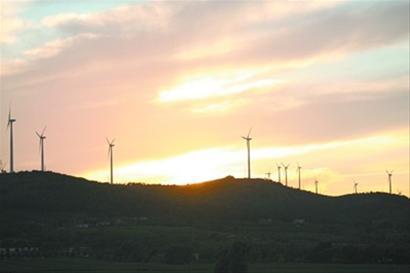
New energy will be one of the strategic emerging industries the government underlines for further development, the State Council reported on its website Monday.
"Developing strategic emerging industries will be a key strategy for upgrading the nation's industrial structure, boosting economic growth as well as building up international competitiveness," the report said. Emerging new-energy industries include the fast-growing nuclear, solar, wind and bio-energy sectors.
According to the State Council, China's cabinet, emerging industries include energy conservation and environmental protection, information technology, biology, high-end manufacturing, new energy, new materials and new-energy vehicles.
The government plans to introduce favorable financial and tax measures to stimulate development, including special funds, tax incentives and preferential loan treatment.
In addition, Beijing will provide 4 trillion yuan ($600 billion) in financial support for key emerging industries, Hong Kong media quoted two un-named Party officials as saying.
"China has already made remarkable progress in some industries, like nuclear and wind power," said Li Junfeng, secretary general of the Chinese Renewable Energy Industries Association.
According to the National Energy Administration, China currently has 25 nuclear reactors under construction and 34 other reactors projects have received the green light, according to the National Energy Administration.
At the same time, China is flexing its muscle in wind and solar power as well. By 2020, China's total wind power capacity will reach at least 150 gigawatts (GW), and possibly top 230 GW.
Experts said China may become the world's No.1 solar market in the next five years.
"Rapid wind power growth in China has been propelled by both the increasing need for energy and the government's eagerness to develop low-carbon technologies," said the Chinese Renewable Energy Industries Association's Li.
In the next few years, China aims to increase the use of non-fossil energy to make up 15 percent of its primary energy consumption and to reduce its carbon intensity by 40 to 45 percent from 2005 levels.





